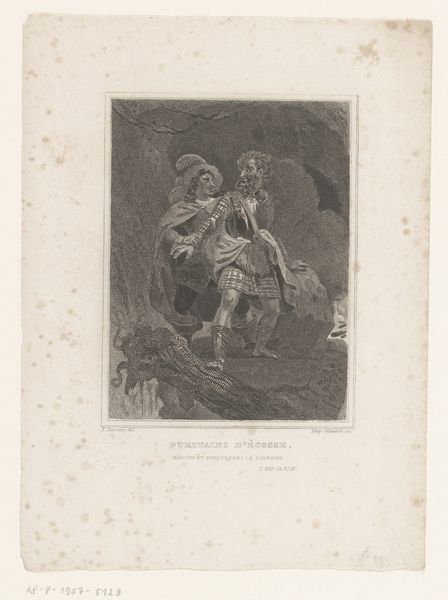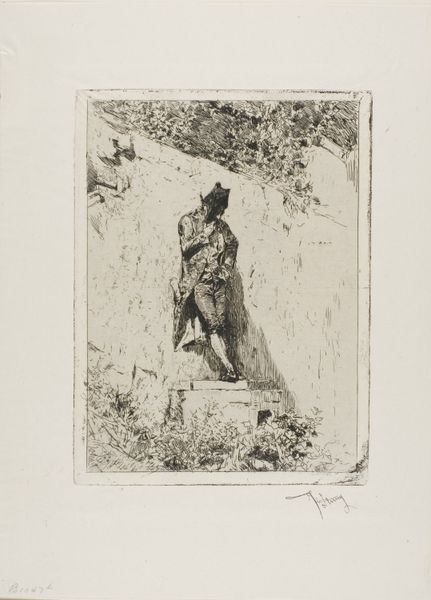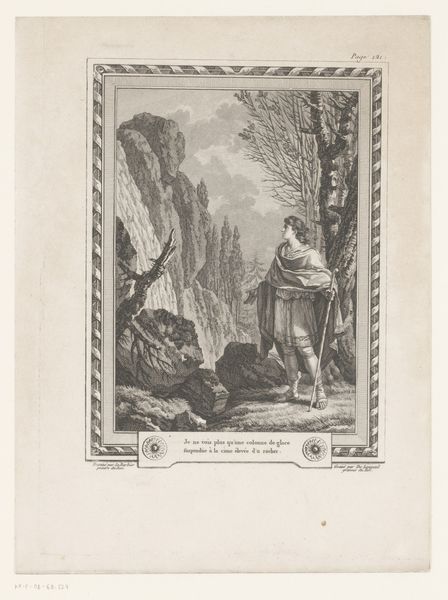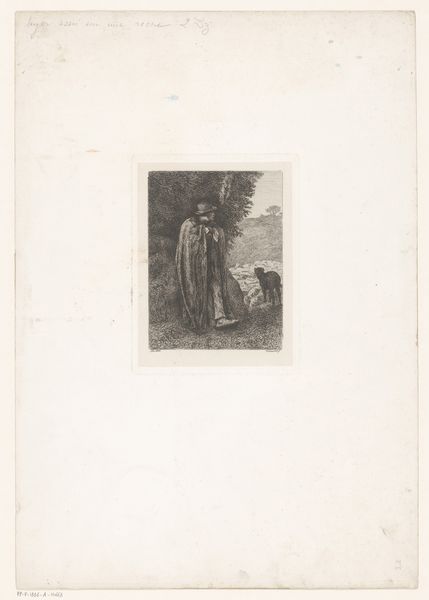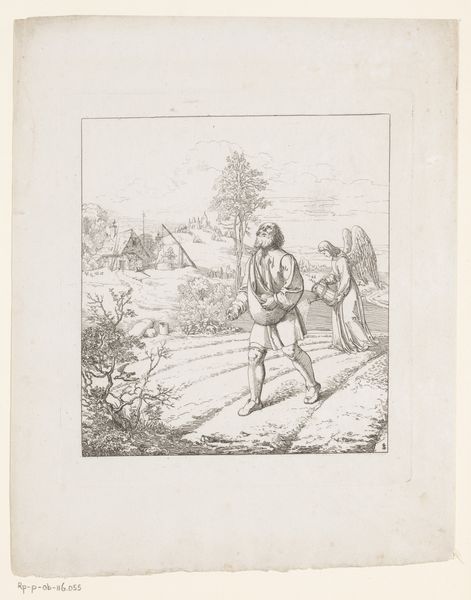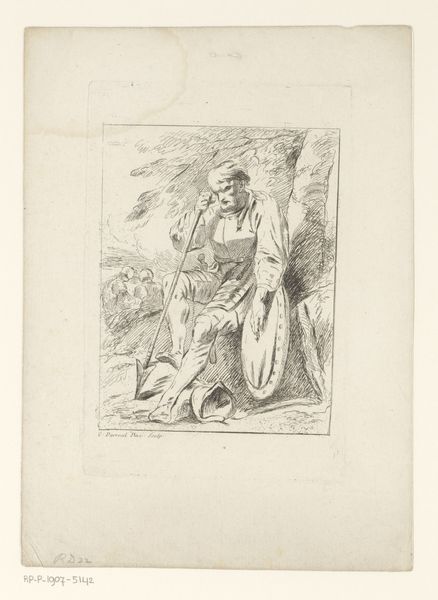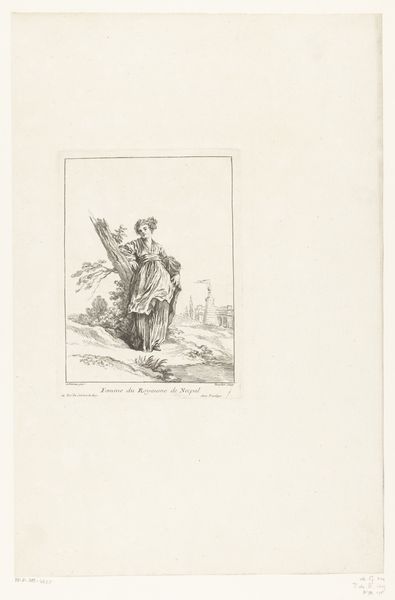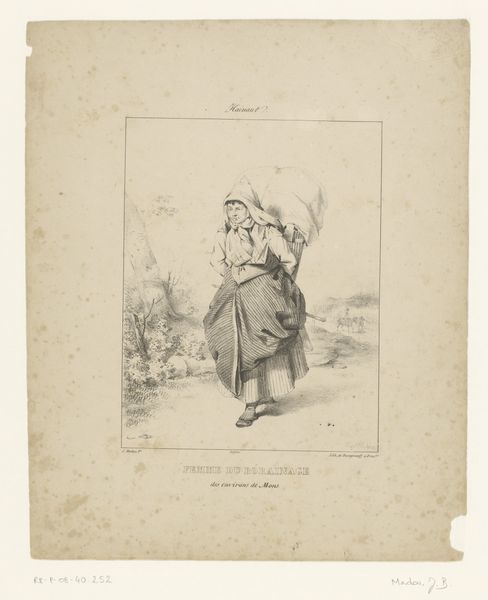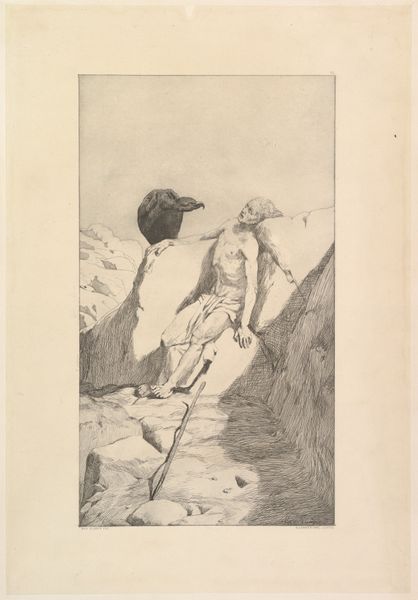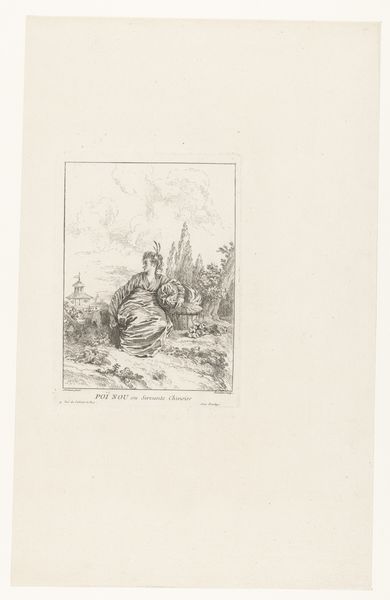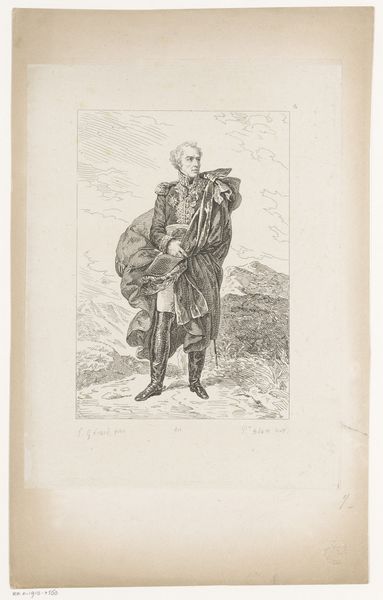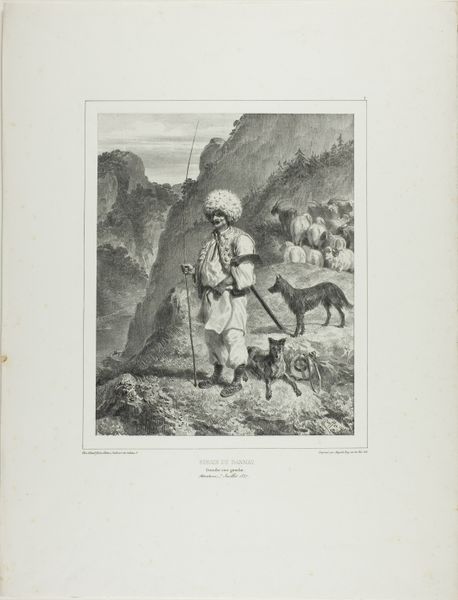
drawing, ink, pen
#
drawing
#
ink drawing
#
narrative-art
#
landscape
#
figuration
#
ink
#
romanticism
#
pen
Dimensions: height 175 mm, width 110 mm
Copyright: Rijks Museum: Open Domain
Editor: This is "Soldier or Pirate at Ruin" by Bernardus Theodorus van Loo, made in 1844. It's an ink drawing. I'm struck by how forlorn the figure looks against the backdrop of decay. What do you see in this piece? Curator: I see a powerful commentary on the societal costs of conflict. Look at the central figure: is he a soldier or a pirate, and does it truly matter? Both exist outside the bounds of conventional society, often rendered invisible or disposable. Van Loo created this drawing in 1844. How might anxieties about empire and national identity inform this portrayal? Editor: That’s interesting. I hadn't considered it as a critique of empire. I was more focused on the Romantic aesthetic of ruins and the lone figure. Curator: Precisely! Romanticism wasn't merely about aesthetics; it also engaged with power structures. The ruin here could symbolize the decay of societal systems and their effects on individuals marginalized by war and conquest. The question then becomes, who is permitted to mourn these losses, and whose narratives are prioritized in history? Do you think his dress alludes to one identity more than the other? Editor: I see what you mean. The shabbiness and disarray complicate any simple identification. Maybe it’s about the blurring of lines. Curator: Exactly. By depicting this ambiguity, Van Loo might be highlighting the interchangeability of these roles within oppressive systems. It compels us to examine who profits and who suffers when societies embrace violence as policy. Editor: I learned so much about reading artworks with a deeper, critical awareness. Curator: And I think this artwork reminds us how crucial it is to investigate both visible and obscured voices when reflecting on history.
Comments
No comments
Be the first to comment and join the conversation on the ultimate creative platform.
